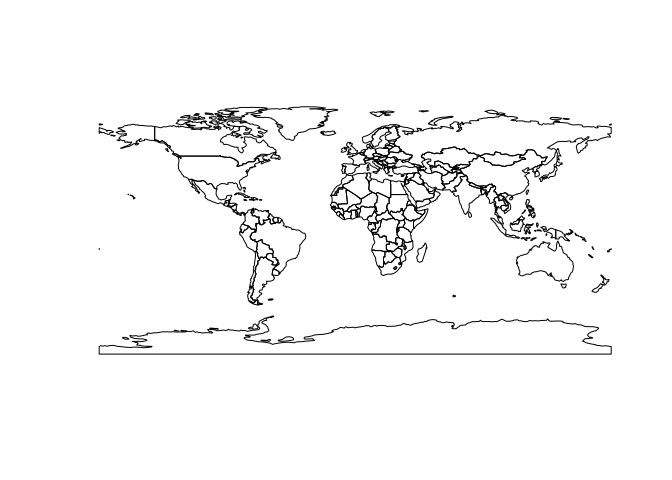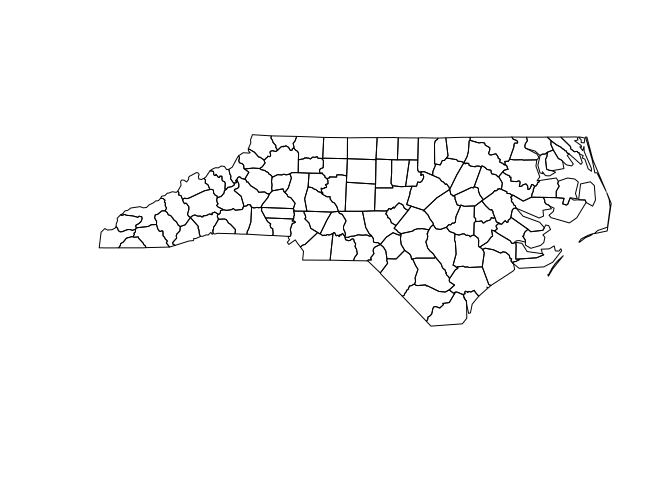sfarrow is a package for reading and writing Parquet and Feather files with sf objects using arrow in R.
Simple features are a popular format for representing spatial vector data using data.frames and a list-like geometry column, implemented in the R package sf. Apache Parquet files are an open-source, column-oriented data storage format (https://parquet.apache.org/) which enable efficient read/writing for large files. Parquet files are becoming popular across programming languages and can be used in R using the package arrow.
The sfarrow implementation translates simple feature data objects using well-known binary (WKB) format for geometries and reads/writes Parquet/Feather files. A key goal of the package is for interoperability of the files (particularly with Python GeoPandas), so coordinate reference system information is maintained in a standard metadata format (https://github.com/geopandas/geo-arrow-spec). Note to users: this metadata format is not yet stable for production uses and may change in the future.
Installation
sfarrow is available through CRAN with:
install.packages('sfarrow')or it can be installed from Github with:
devtools::install_github("wcjochem/sfarrow@main")Load the library to begin using it.
arrow package
The installation requires the Arrow library which should be installed with the R package arrow dependency. However, some systems may need to follow additional steps to enable full support of that library. Please refer to the arrow documentation.
Basic usage
Reading Parquet data of spatial files created with Python GeoPandas.
# load Natural Earth low-res dataset.
# Created in Python with geopandas.to_parquet()
path <- system.file("extdata", "world.parquet", package = "sfarrow")
world <- st_read_parquet(path)
world
#> Simple feature collection with 177 features and 5 fields
#> Geometry type: GEOMETRY
#> Dimension: XY
#> Bounding box: xmin: -180 ymin: -90 xmax: 180 ymax: 83.64513
#> Geodetic CRS: WGS 84
#> First 10 features:
#> pop_est continent name iso_a3 gdp_md_est
#> 1 920938 Oceania Fiji FJI 8.374e+03
#> 2 53950935 Africa Tanzania TZA 1.506e+05
#> 3 603253 Africa W. Sahara ESH 9.065e+02
#> 4 35623680 North America Canada CAN 1.674e+06
#> 5 326625791 North America United States of America USA 1.856e+07
#> 6 18556698 Asia Kazakhstan KAZ 4.607e+05
#> 7 29748859 Asia Uzbekistan UZB 2.023e+05
#> 8 6909701 Oceania Papua New Guinea PNG 2.802e+04
#> 9 260580739 Asia Indonesia IDN 3.028e+06
#> 10 44293293 South America Argentina ARG 8.794e+05
#> geometry
#> 1 MULTIPOLYGON (((180 -16.067...
#> 2 POLYGON ((33.90371 -0.95, 3...
#> 3 POLYGON ((-8.66559 27.65643...
#> 4 MULTIPOLYGON (((-122.84 49,...
#> 5 MULTIPOLYGON (((-122.84 49,...
#> 6 POLYGON ((87.35997 49.21498...
#> 7 POLYGON ((55.96819 41.30864...
#> 8 MULTIPOLYGON (((141.0002 -2...
#> 9 MULTIPOLYGON (((141.0002 -2...
#> 10 MULTIPOLYGON (((-68.63401 -...
plot(sf::st_geometry(world))
Writing sf objects to Parquet format files. These Parquet files created with sfarrow can be read within Python using GeoPandas.
nc <- sf::st_read(system.file("shape/nc.shp", package="sf"), quiet=TRUE)
st_write_parquet(obj=nc, dsn=file.path(tempdir(), "nc.parquet"))
#> Warning: This is an initial implementation of Parquet/Feather file support and
#> geo metadata. This is tracking version 0.1.0 of the metadata
#> (https://github.com/geopandas/geo-arrow-spec). This metadata
#> specification may change and does not yet make stability promises. We
#> do not yet recommend using this in a production setting unless you are
#> able to rewrite your Parquet/Feather files.
# read back into R
nc_p <- st_read_parquet(file.path(tempdir(), "nc.parquet"))
nc_p
#> Simple feature collection with 100 features and 14 fields
#> Geometry type: MULTIPOLYGON
#> Dimension: XY
#> Bounding box: xmin: -84.32385 ymin: 33.88199 xmax: -75.45698 ymax: 36.58965
#> Geodetic CRS: NAD27
#> First 10 features:
#> AREA PERIMETER CNTY_ CNTY_ID NAME FIPS FIPSNO CRESS_ID BIR74 SID74
#> 1 0.114 1.442 1825 1825 Ashe 37009 37009 5 1091 1
#> 2 0.061 1.231 1827 1827 Alleghany 37005 37005 3 487 0
#> 3 0.143 1.630 1828 1828 Surry 37171 37171 86 3188 5
#> 4 0.070 2.968 1831 1831 Currituck 37053 37053 27 508 1
#> 5 0.153 2.206 1832 1832 Northampton 37131 37131 66 1421 9
#> 6 0.097 1.670 1833 1833 Hertford 37091 37091 46 1452 7
#> 7 0.062 1.547 1834 1834 Camden 37029 37029 15 286 0
#> 8 0.091 1.284 1835 1835 Gates 37073 37073 37 420 0
#> 9 0.118 1.421 1836 1836 Warren 37185 37185 93 968 4
#> 10 0.124 1.428 1837 1837 Stokes 37169 37169 85 1612 1
#> NWBIR74 BIR79 SID79 NWBIR79 geometry
#> 1 10 1364 0 19 MULTIPOLYGON (((-81.47276 3...
#> 2 10 542 3 12 MULTIPOLYGON (((-81.23989 3...
#> 3 208 3616 6 260 MULTIPOLYGON (((-80.45634 3...
#> 4 123 830 2 145 MULTIPOLYGON (((-76.00897 3...
#> 5 1066 1606 3 1197 MULTIPOLYGON (((-77.21767 3...
#> 6 954 1838 5 1237 MULTIPOLYGON (((-76.74506 3...
#> 7 115 350 2 139 MULTIPOLYGON (((-76.00897 3...
#> 8 254 594 2 371 MULTIPOLYGON (((-76.56251 3...
#> 9 748 1190 2 844 MULTIPOLYGON (((-78.30876 3...
#> 10 160 2038 5 176 MULTIPOLYGON (((-80.02567 3...
plot(sf::st_geometry(nc_p))
For additional examples please see the vignettes.